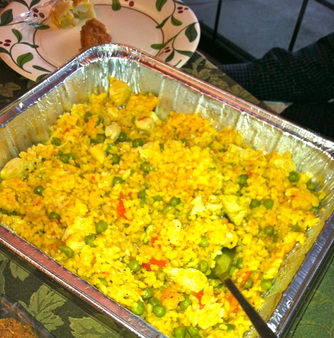 I used red and green veggies for Christmas colors! While home for the holidays, I wanted to bring a bit of Spanish culture to my family's taste buds. With a suitcase full of Spanish olives, wine, jamón, and cheese, they were pleasantly surprised at all of Spain's sabores.
The new cocinera in me made a Christmas Paella on Christmas Eve. But there was one more thing I wanted to share, my favorite Spanish food. An authentic Spanish Tortilla de Patatas.
Tortilla as we call it in Spain, is not what an American would think of when they hear that word. But this is not a flattened piece of bread to make tacos. Nor is it a triangular chip. In fact, it has no relation to tacos at all.
Otherwise known as Tortilla Española, or Spanish Omelet in English, a tortilla is probably one of the most common foods in Spain.
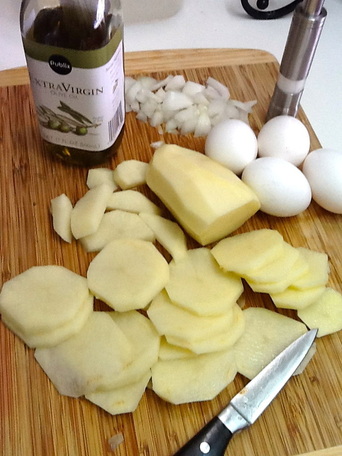 Can you tell I made this in Florida? PUBLIX! To make a tortilla, you will need:
-4 Eggs
-3 Potatoes
-Oil
-Salt
I added onions to mine, and in the past I have also added peppers. Depending on the size you want the tortilla to be, you can add more of each ingredient. Chop the onions and slice the potatoes, then salt them and fry them over hot oil until they are tender enough to cut with a fork. Scramble the eggs (I use a little bit of milk to make the eggs a little fluffier) and add salt.
Pour the eggs onto the potato and onion mixture and let it cook, pushing the sides in as pictured until there is little or no goo-ey-ness on top. Now comes the tricky part. The flip.
Both sides need to be cooked, so the tortilla needs to be flipped onto a plate, and then slid back into the pan for the other side to cook. 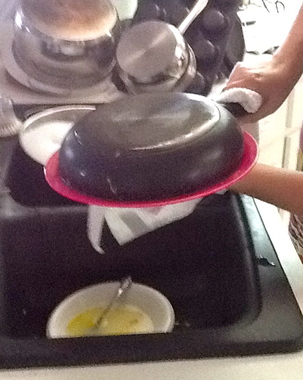 Cmon baby, let's do the flip. 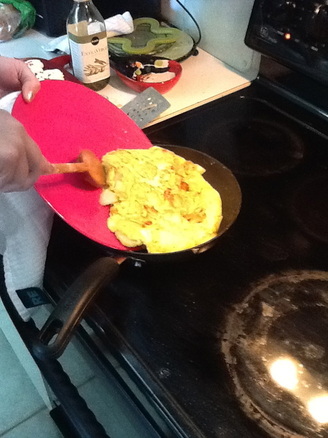 Back into the pan to cook the other side. When your finished product comes out, it should be round and delicious looking.
I cut mine into squares, and served it hot, right next to my Christmas Paella, for a little bit of Spanish cheer.
In less than 24 hours I will be leaving Spain for Navidad and flying over the Atlantic, home to Florida. All things I have missed about home will be waiting for me when I return, and I couldn't be more excited!  The Florida sunset on Siesta Key beach
Things I will be indulging in during the next 2 weeks:
My bed
Carpeted Floors
Siesta Key beach
Going shopping on a Sunday or during the hours of 2pm-5pm
Frozen yogurt with do-it-yourself toppings
A dryer
Redbox DVDs
Driving
The Target dollar-spot
Degrees in Fahrenheit
Being barefoot and not being judged
My mom's home cooking
And most of all...MY FAMILY AND FRIENDS that I have missed so much while being across the world thinking about them constantly.
My bags are packed and I'm ready to fly home. Santa Clause has a new name this year: Papa Noel to my family because he is bringing lots of Spanish goodies (in my suitcase).
¡Hasta mañana, Florida!
What is a tapa?
A tapa is a small plate of food served with a drink.
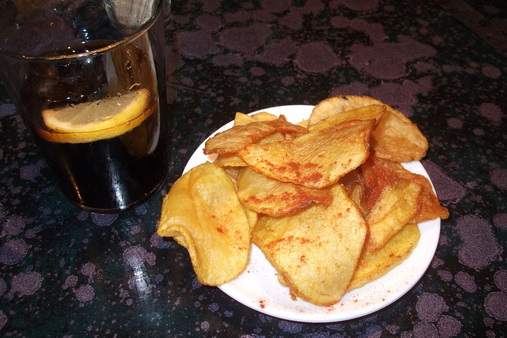 A simple tapa of home-made potatoes and pepper 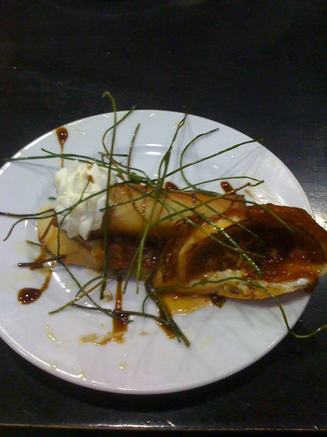 An extensive tapa of Grilled goat cheese and a fried ham and cheese eggroll Where did tapas originate?
Tapa means lid in Spanish, and it is said that long ago in a terrible storm, the King put a piece of jamon on top of his glass of wine so the dust wouldn't get in. Thus creating a lid, or, a tapa.
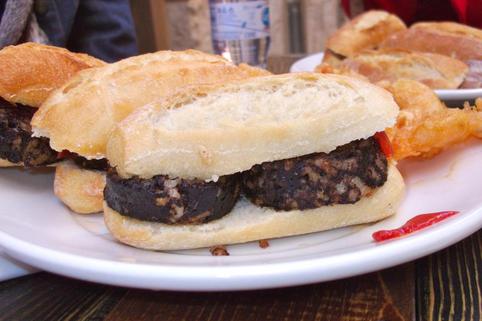 A mini sandwich of Morcilla. (You don't want to know what Morcilla is...trust me. Eat, then ask.) 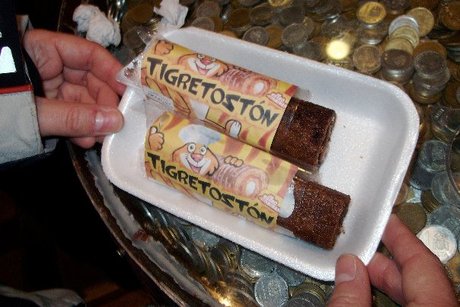 Bread with onions, meat and cheese all baked together and designed to look like a replica of a typical little kid's dessert. How much do tapas cost?
The most expensive tapa I've had was 3 euros. And the least expensive- free! In León, Spain, most tapas are free with the purchase of a drink.
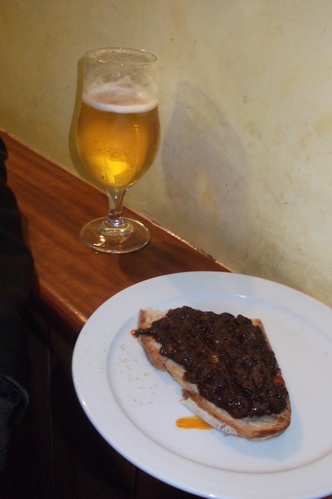 Toast with Morcilla on top (Again, don't ask. But it's delicious.) 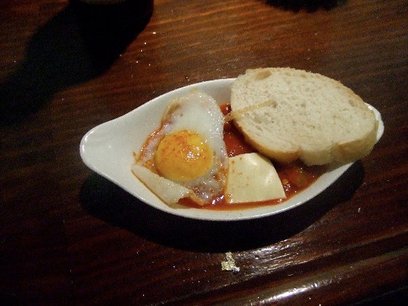 This egg is about the size of a quarter. How many tapas do you eat at once?
One if you are eating them as an appetizer before a meal, or 3-5 if you are heading out tapa-hopping (as I like to call it) for a night's activity with friends.
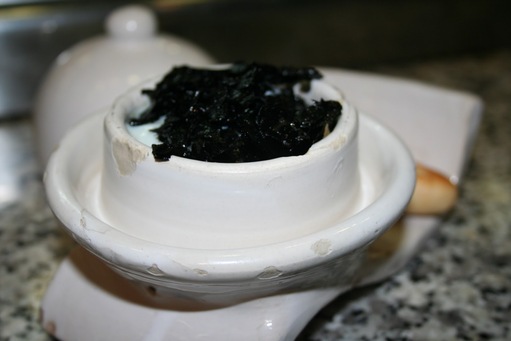 The "Obama en la Casa Blanca" tapa famous in Valladolid 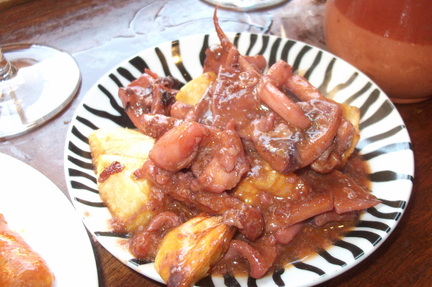 Pulpo (octopus) with potatoes 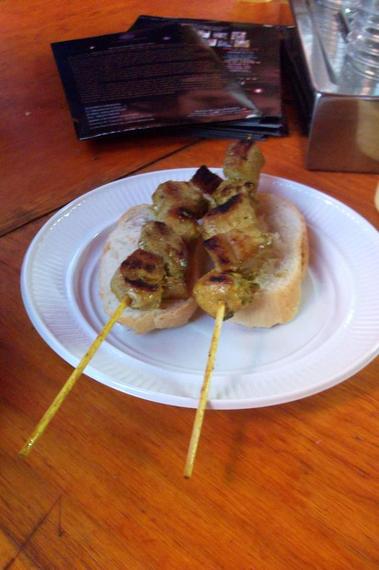 Pincho Moruno with mustard sauce What is the best tapa?
We all have our opinions. My personal favorite is the croqueta. A fried ball of ham, fish, or cheeses, etc. Simple and traditionally Spanish, but with tons of different options of what could be inside. 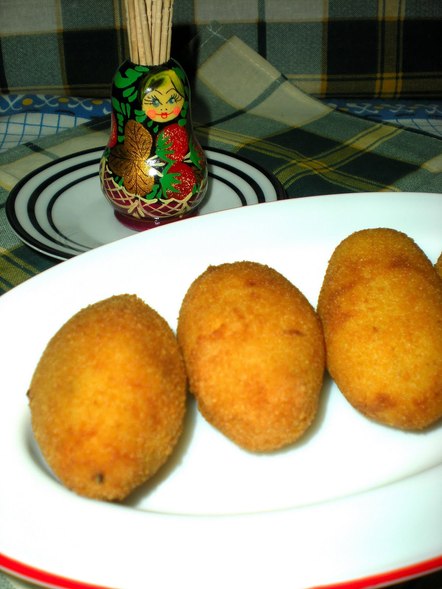 Life is like a croqueta, you never know which one you're gonna get.
I have always loved Halloween. My favorite costume when I was a little girl was Cleopatra, and I still remember getting to wear the black eyeliner for the first time. I loved bobbing for apples, walking around the neighborhood with friends, and oh yeah, I guess I liked getting free candy, too.
For the Halloween puente (literal translation: bridge, but it's the name for a break from school here in Spain) I headed to another country, Portugal to be exact. More on that later. But Halloween was still going on here in Spain.
Halloween is said to have started in Ireland. But I have always thought of it as an All-American holiday. Celebrating outside of the traditions I know made me a bit nervous.
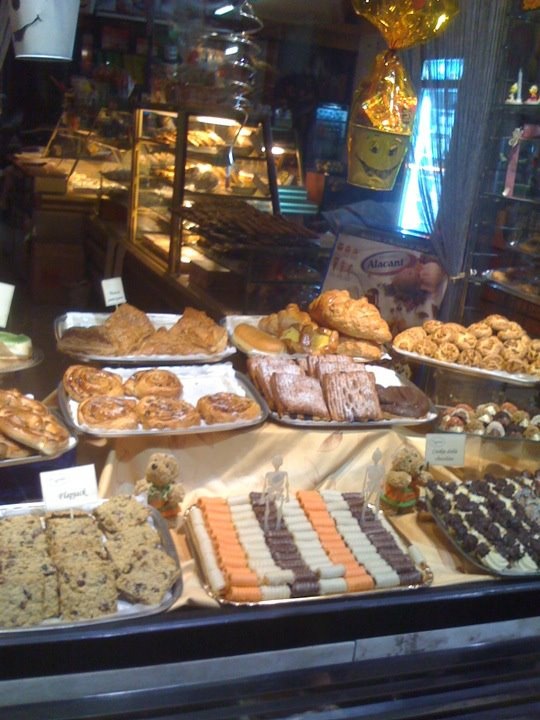 A bakery decorated for Halloween with lots of treats. But in recent years, the Spanish have caught on to how much fun we Americans are having around this time of year, and Halloween has hit Spain with a BOO!
Here it is a holiday for children, unless you are in a big city where there will be plenty of nightlife and costume parties at local bars. The children dress up in costumes and trick-or-treat a.k.a. Truco Trato around the small neighborhoods and apartment buildings. Teenagers (as my students informed me) throw eggs at houses that don't give them candy. ¿Que educada, verdad?
The grand event of the weekend and the true holiday behind the puente is El Día de Todos los Santos, All Saint's Day. Families visit their deceased loved ones and place exquisite flower arrangements on their graves for this special day of rememberance.
Forget pumpkin pie, the typical foods here during this holiday are Huesos de los Santos and Buñuelos. Deserts that you can find in any local Pastelaria.
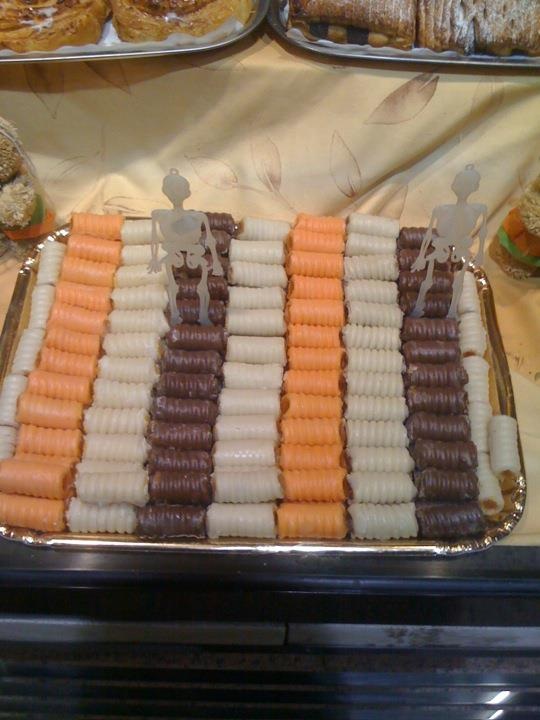 Huesos de los Santos, Saint's Bones. I wasn't a huge fan of the marzipan texture with chocolate coating, but they are very popular with the Spanish! All over the world, Halloween is celebrated differently. In Portugal, there were no decorations in the streets, no special foods, and few shops that sold costumes. Maybe next year I will find out how it is celebrated in another country!
In my home in Florida on Halloween, we had a steady stream of trick-or-treaters this year. Creating a new tradition with my family from across the ocean, I Skyped live as the door bell was being rung in my house. My mom held my floating-head-of-a-computer-screen in her hands as she handed the kids their candy, and we all laughed so hard. Somehow each time it got funnier.
With the new customs I've learned about, new foods I've tasted, and new traditions I've made with family...I have to say, I still love Halloween!
Recently, I have been channeling my inner española in la cocina.
My most recent dish is the ever-so-Spanish Paella. Say it with me now: pie-ay-yuh.
The origin of the dish comes from Valencia, Spain (on the East coast) and it is said to be the most delicioso when eaten in that city.
Paella is a Catalan word (a language they speak in Valencia) and comes from the word pan, specific to the pan that you cook paella in. In Valencia, they call all pans paellas. A bit confusing, right? They also call the pan a paellera.
The corazon and key ingredient of the dish is Saffron. A spice that is very expensive in Spain, but turns the paella the right color, and gives it a distinct taste.
You'll need:
-Saffron
-Oil. And if you happen to be in Spain while cooking it, no problem. I'm living in the olive oil capital of the world. Rico and cheap, too!
-Chicken Stock (or vegetable stock, or beef stock, or seafood stock)
-Chicken or seafood, or rabbit, or whatever you prefer in your paella. We used chicken and seafood. 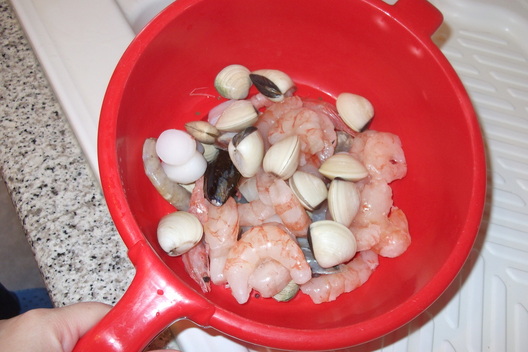 Frozen seafood mixture. Drain and boil for 10 minutes before adding into the paella. -A lemon. Half to be squeezed in while cooking, and half to garnish the dish.
-A mix of veggies. We used frozen peas and fresh tomatoes.
-Rice. Small, white rice is the best to use.
-Water. 2 cups for each cup of rice. 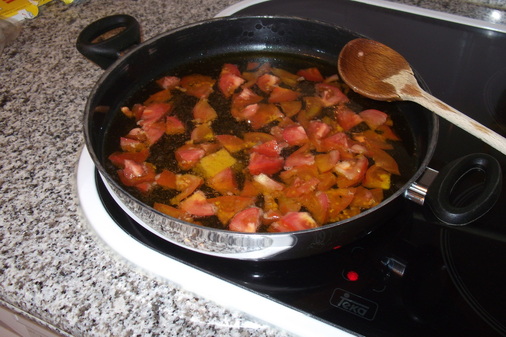 Tomatoes and chicken with the chicken stock cube cooking in oil on high heat. 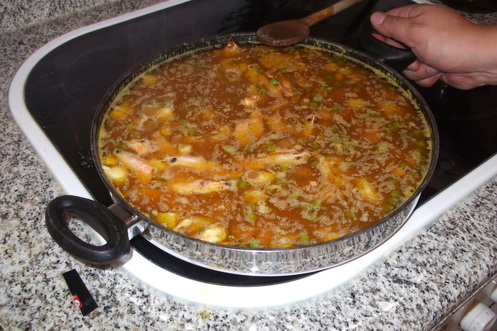 Add in all ingredients and stir. Cook and stir all the ingredients together for about 8 minutes on high heat.
Like all true Spanish things, the paella likes to siesta too!
Cover the pan and turn to medium heat to let it sit for about 10 minutes.
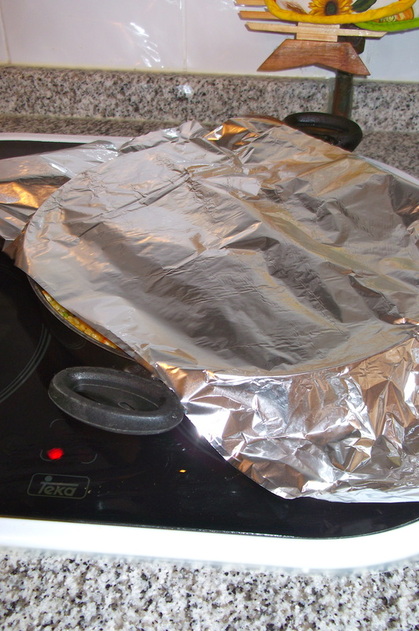 Can you smell those flavors? When you are finished, the paella should look something like this: 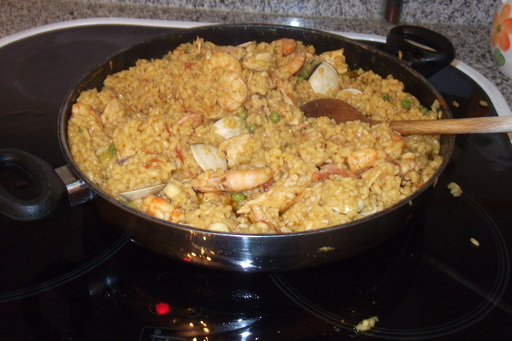 A delicious mixture of flavors and textures. Add a side of pan and a glass of vino and you've cooked your way into a true Spanish meal.
As they say in Spain before every meal, ¡Que aproveche! 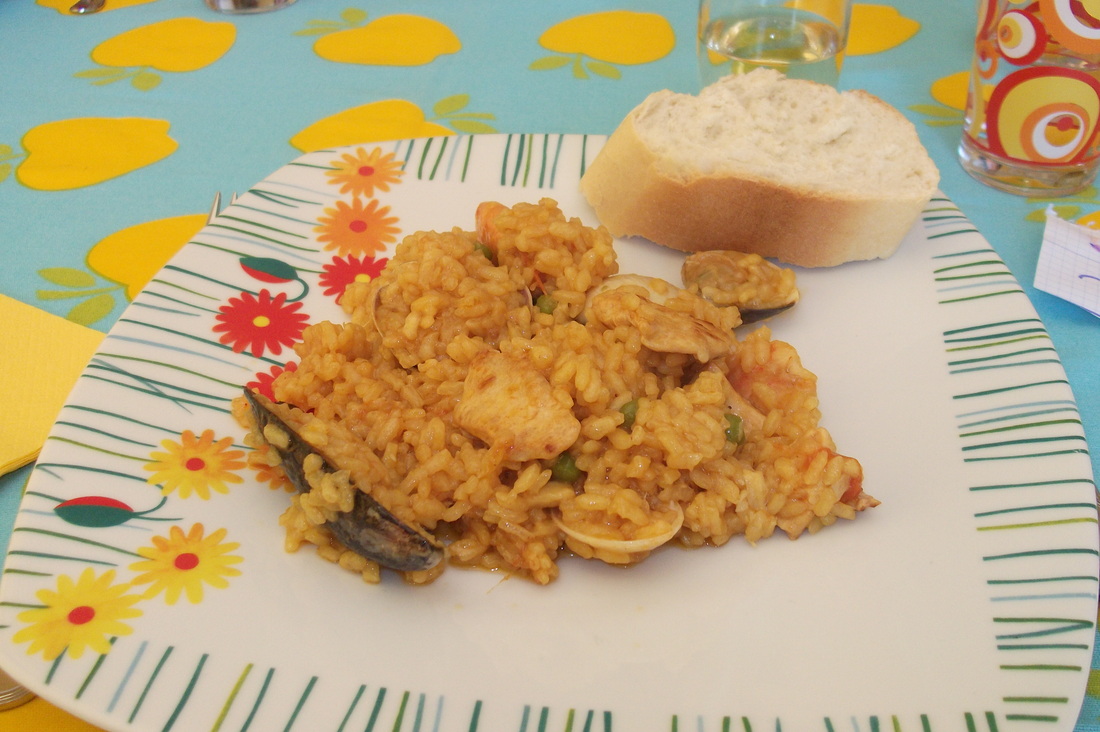 Mmmm. ¡Que rico!
|

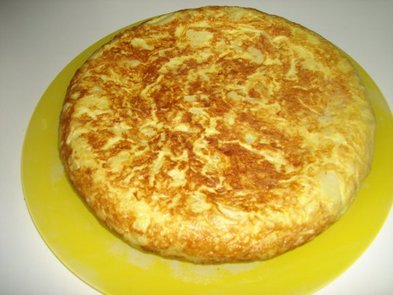

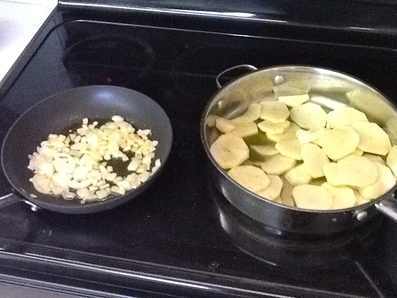
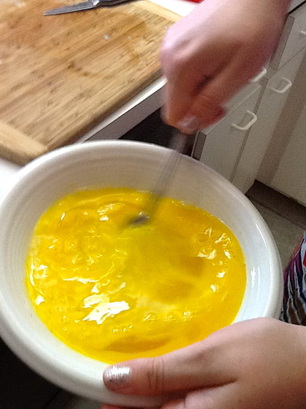
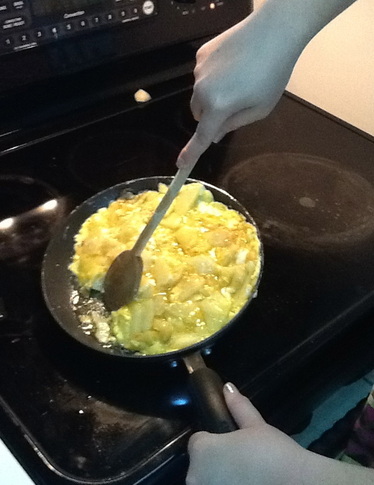


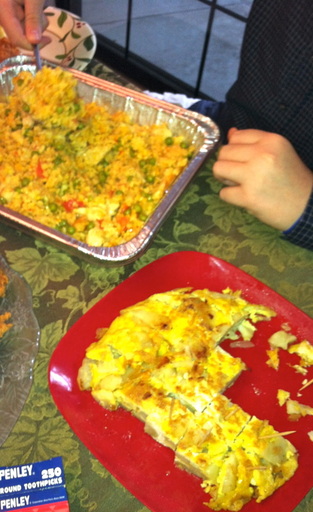

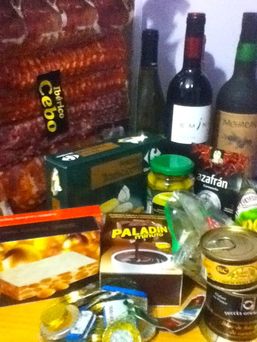











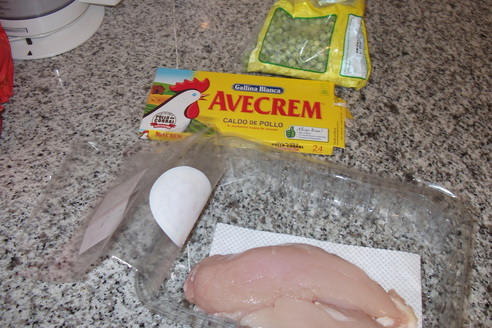

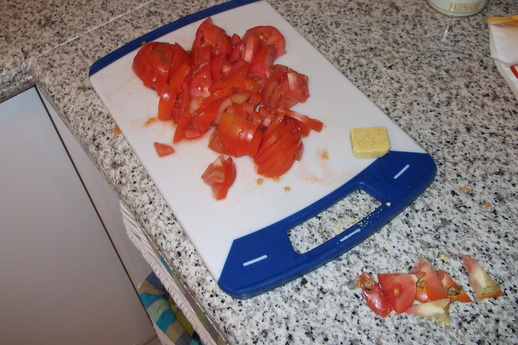







 RSS Feed
RSS Feed
